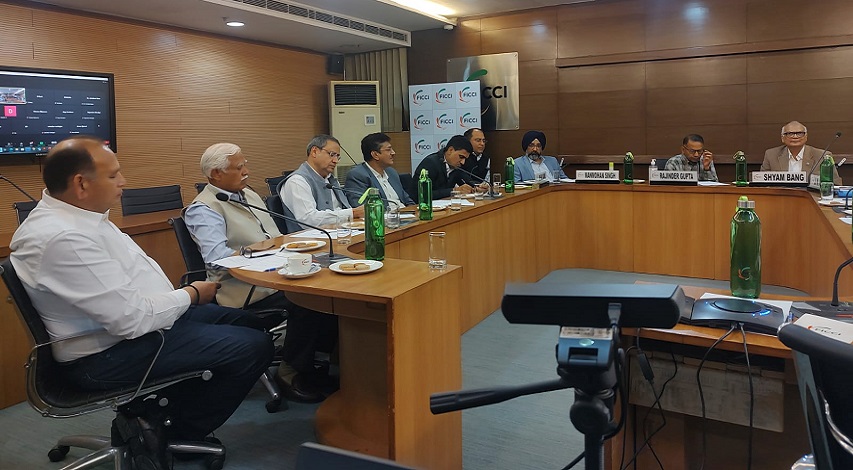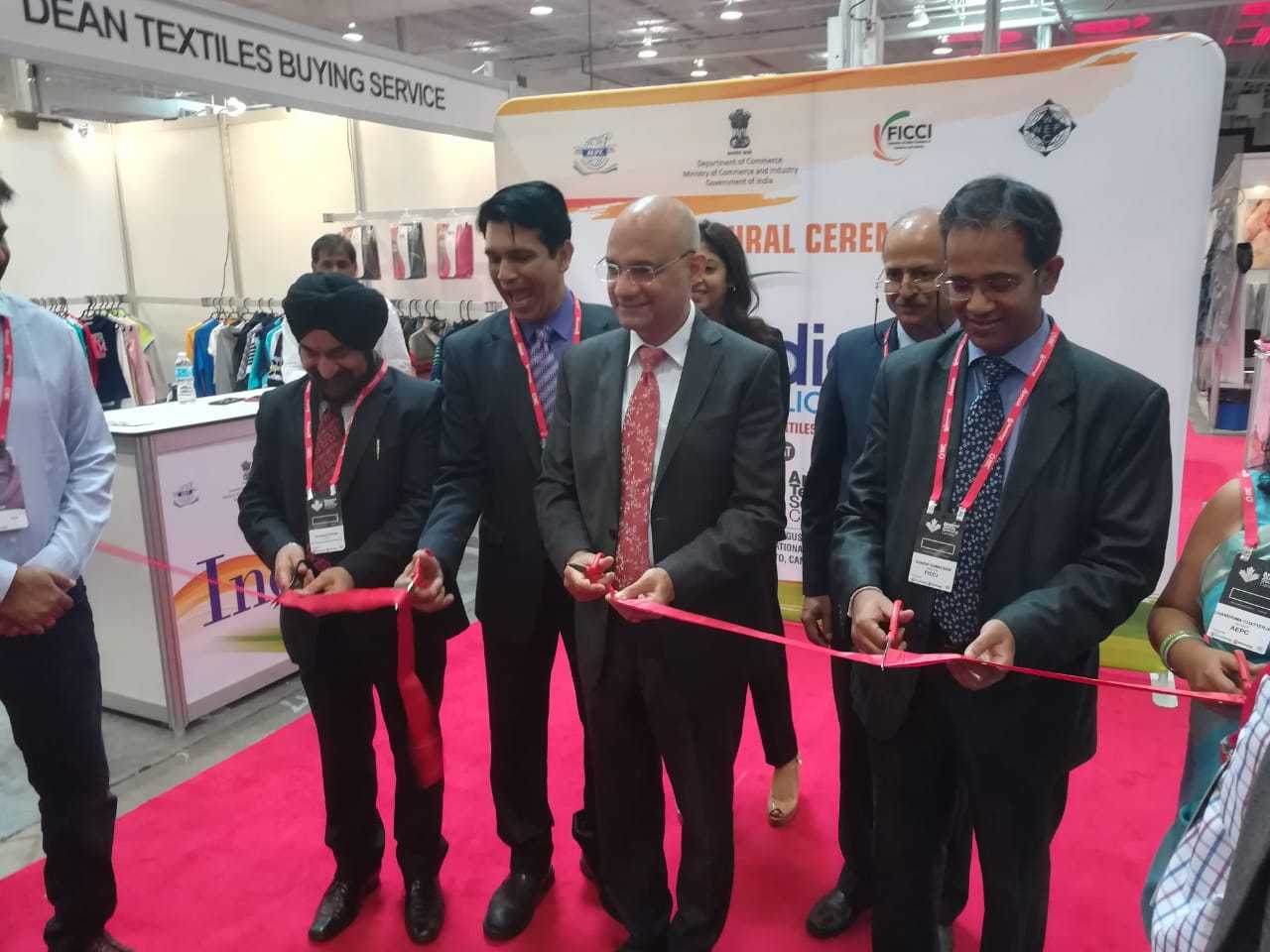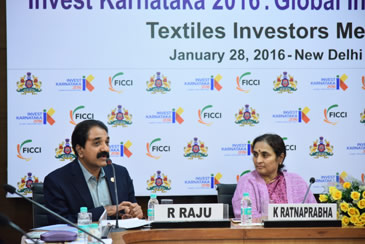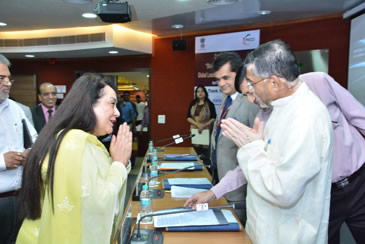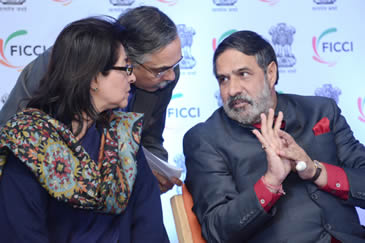Indian textiles industry is one of the largest and oldest in the country. The sector showcases rich cultural heritage and traditional designs blend with modernity, making its products popular across the globe. India has diverse presence of natural and manmade fibres and the entire value chain exists in the country.
FICCI's Engagement
Team Leader
Chetan Bijesure
Assistant Secretary GeneralTimeline

FICCI Closed Door Discussion on Textiles & Apparels with Mr. Manish Singh, Principal Secretary, Government of Madhya Pradesh

Interactive Meeting with Smt. Rachna Shah, Secretary, Ministry of Textiles, Government of India
Indian technical textile industry can aim to reach $200 billion market by 2047: Piyush Goyal, Minister of Commerce & Industry, Consumer Affairs, Food & Public Distribution, Textiles, GoI
Future of Indian textile sector closely linked with growth of technical textile industry: Darshana Vikram Jardosh, MoS, Textiles & Railways, GoI
Make in Odisha Conclave'22: Sectoral Session Department of Handloom, Textile & Handicraft
Govt to focus on Research & Development under National Technical Textiles Mission: Upendra Prasad Singh, Secretary, Ministry of Textiles
FICCI welcomes PLI for Textile sector
Technical clothing requirements for armed forces likely to be included in negative import list; keen to procure indigenised techno textiles: General Bipin Rawat
Product Development, Digitalization, Niche products & world class R&D institutions way forward to reposition India in Global Textile value chain: Textile Industry Experts

FICCI TAG 2021 - 12th annual Textile and Apparel Conference: Repositioning Indian Textiles and Strategizing for Growth in the Post-COVID World
GLOBIZ: Global Textile & Home Furnishing Expo
Government looking at mandatory use of technical textiles in over 90 areas, 40 new HSN codes in Technical Textiles soon - Textile Secretary Ravi Capoor at Technotex-2019
FICCI textiles industry delegation submits agenda to Minister of Textiles Ms Smriti Zubin Irani
Govt. likely to bring mandatory standards for technical textiles items where Indian standards are developed: Secretary-Textiles Mr Raghvendra Singh
Notification of HSN Codes for 207 technical textile Items a major growth booster for the sector: Textiles Minister Smriti Irani Technical Textiles estimated to grow to Rs 2 lakh cr. by 2021
FICCI suggests housing scheme for women garment workers in cities Grant of higher FAR in existing factories merits consideration
First-ever Indian Standard on Bullet Resistant Jacket released to help speed up procurement, testing of materials & reduce import dependence
FICCI welcomes hike in Custom Duty on Textile Products
FICCI Welcomes Government's Multifaceted Measures to Address Textiles Industry Problems
Khadi to boost India's economic growth & generate employment- Suresh Prabhu
TECHNOTEX 2018 concludes with 1160 B2B meetings, 51 G2B and 230 International reverse buyer-seller meets
Technotex 2018
Foreign companies must invest in India's growing Technical Textile - Anant Kumar Singh
FICCI Welcomes the Draft Textiles Policy of UP Government
Over 95 companies showcase Indian textiles at Textillegprom in Moscow
Need to address issue of lack of manpower in technical textiles sector: Smriti Irani
A delegation from FICCI calls on Smt Smriti Zubin Irani, Minister of Textiles,Government of India
FICCI comments on the Cabinet's approval for a special package for the Textile Sector
Germany's Partnership for Sustainable Textiles: Incentivizing the Indian textile supply chain
FICCI Textiles Committee meets FM Jaitley
FICCI Note on Pressing Issues of India Textiles Industry

FICCI Textiles Committee Calls-on Sri Arun Jaitley, Finance Minister, Government of India
FICCI seeks adequate release of cotton by CCI for Textiles Industry
FICCI-TAG 2014 Conference
VASTRA 2014
FICCI's Suggestions to Mr Santosh Gangwar, Minister for Textiles
FICCI calls for enabling labour laws to boost textile & clothing industry and raise India's share in world exports
FICCI's Suggestions for National Textiles Policy 2013

Seminar on Indian Textiles and Technical Textiles Industry: Challenges & Strategies for Competitiveness in Southern States
FICCI Welcomes West Bengal's Textiles Policy
FICCI Submits West Bengal's Textiles Policy-2022 to the Chief Minister - A 20 Point Agenda for Reviving Textiles in the State
FICCI's Suggestions for West Bengal's Textiles Policy - 2022
Rs 200 Crore Technology Mission on Technical Textiles Launched
FICCI Suggestions for the R&D Policy of Indian Textiles Sector
FICCI Moots R&D Policy for Indian Textiles Industry
Conference on ''German Technology for Indian Textiles''
Regulatory Framework to Boost Growth of Technical
Workshop on "Opportunities for Women entrepreneurs in Textiles Industry"
FICCI Demands Continuation of Stimulus Package for Textiles in 2010
Need to reorient policy goals and entire production system
Geotech : Workshops on Strengthening Government- Industry- Consumer Partnership in Technical Textiles

Agrotech : Workshops on Strengthening Government- Industry- Consumer Partnership in Technical Textiles
Protech : Workshops on Strengthening Government- Industry- Consumer Partnership in Technical Textiles
Meditech : Workshops on Strengthening Government- Industry- Consumer Partnership in Technical Textiles


